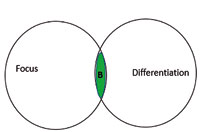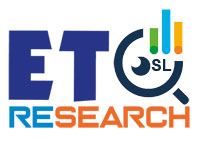How to take your research Journal to the next level?

Prof. Dewasiri N. Jayantha
The Department of Insurance and Valuation at the Faculty of Business Studies and Finance of the Wayamba University of Sri Lanka launched its maiden journal on Insurance and Finance (JIF) on 15th October 2021. The Journal of Insurance & Finance is a refereed journal, published Semi-Annually (January / July) by the Department of Insurance and Valuation, Faculty of Business Studies and Finance, Wayamba University of Sri Lanka.
The ceremonial launch was held online, where Prof. Jagath C Edirisinghe (Acting Vice-Chancellor, Wayamba University of Sri Lanka, Prof. S.K. Gamage (Dean and Editor in Chief of the JIF), Ms. Priyanka Chandrarathne (Head, Department of Insurance and Valuation), Dr. WS Sanjeewa (Senior Lecturer), Mr. DGL Rasika (Senior Lecturer), researchers, academic and non-academic staff of Wayamba University of Sri Lanka participated in the event. Professor Dewasiri N. Jayantha (Faculty of Management Studies, Sabaragamuwa University of Sri Lanka/ Brand Ambassador, Emerald Publishing) attended as the ceremony’s keynote speaker.
Delivering the keynote speech, Prof. Dewasiri emphasized taking your research journal to the next level. As an experienced editor, he emphasised on a winning formula for a journal based on decisive competitive advantages. Given below is the essence of his keynote speech.
Figure 1: How to achieve competitive advantages for your journal?
Prof. Dewasiri emphasized that a journal can achieve competitive advantages using similar strategies we employ in the industry.
He emphasized Porter’s generic strategies such as differentiation and focus along with the blue ocean strategy (through low cost and differentiation) to achieve the competitive advantages amongst 1000s of journals published worldwide. As stated in Figure 1, if you can use these two strategies together, you can achieve decisive competitive advantages.
 It will pave the way towards indexing and developing a top-tier academic journal. He further explained the ways and means of using each strategy.
It will pave the way towards indexing and developing a top-tier academic journal. He further explained the ways and means of using each strategy.
What to focus?
The question is what to focus on the development in a journal. Prof. Dewasiri explained that it is required to focus on both the journal and its manuscripts.
He emphasized that you need to focus on more than 20-30 articles to proceed with a minimum of 5 manuscripts per issue. It is not good to publish more than six articles per issue since it harms the cite score or impact factor.
The impact factor is calculated by taking the average annual number of citations per article published by a journal. If you need to improve the cite score/impact factor, you must publish fewer articles per issue while achieving more citations. But there is a minimum requirement for an issue to proceed with indexing; five manuscripts per issue.
Further, he emphasises that it is required to focus on the journal’s quality than the number of articles (quantity) while focusing on the indexing and abstracting such as Scopus, ABDC, Web of Science, ABS, etc. It is mandatory to maintain the journals following their indexing requirements.
 Further, he explained that you need to focus on attracting good reviewers and building long-term relationships for the betterment of the journal. Reviewers are rendering their services on an honorary and non-paid basis. Hence it is needed to develop long-term partnerships with them.
Further, he explained that you need to focus on attracting good reviewers and building long-term relationships for the betterment of the journal. Reviewers are rendering their services on an honorary and non-paid basis. Hence it is needed to develop long-term partnerships with them.
Moreover, it would help if you focused on fulfilling the key and minimum requirements of a journal. First, you need to obtain the ISSN numbers (online/print) as you did for the Journal of Insurance and Finance. Then, you have to proceed with DOI (Digital Object Identification) numbers for all the articles you produce.
It is possible to obtain the DOI numbers from one of the DOI issuing agencies such as CrossRef. Here, I suggest you collaborate with SLJOL, operated by the National Science Foundation, to obtain the DOI numbers and the automated journal management platform free of charge. Further, you must adhere to the respective Creative Commons License (CC BY, CC BY-SA, CC BY-NC, CC BY-ND, CC BY-NC-SA, or CC BY-NC-ND) while proceeding with Google Scholar Index.
Finally, it is required to focus on the manuscripts as well:
You have to see whether the manuscripts are written using a scientific approach instead of a nonsense approach. As editors, you must see whether the manuscripts focus on recent and contextual literature to differentiate it from other studies in the same phenomenon.
You have to check whether the manuscripts are following the submission guidelines.
You have to check whether the manuscripts have a clear focus emphasizing originality and implications to the practice/society.
If all answers are “yes,” then start the review process; otherwise, you can proceed with a desk rejection or un-submission.
What to Differentiate?
Professor Dewasiri suggested that it is possible to differentiate your journal from the other journals in the field. Here, you can differentiate your journal (outlet) and the content (manuscript). He advised differentiating your paper from the other manuscripts to make its originality and enhance the overall quality. For instance, you can proceed with contextual differentiation and methodological differentiation (innovation), as well as your findings from previous studies.
Most of the top-ranking outlets differentiate their journal from the other competitive journals. Accordingly, you can differentiate your journal through indexing/abstracting, cite score, submission and editorial process automation, quality of the manuscripts, service quality, timely decisions, reviewer management, platinum/diamond open access model, global visibility, etc.
For instance, if you achieve a top cite score/impact factor, you can differentiate your journal from other peer-reviewed journals. Moreover, you can win your customers’ hearts without dragging the decisions for months/years if you are proceeding with timely editorial decisions.
We can see that different open access models are available worldwide. The repository-based green open access is a good platform, but there is an indexing issue regarding the same. Most of the time, we can see an APC is applicable for Gold Open access where the authors or funding institutions need to pay for the publication. In a hybrid, the authors can precede either open access or restricted access.
If the authors are moving with open access, the authors need to pay; otherwise, subscribers need to pay. The bronze-open access model has no open access license.
There are limitations in all models, but the Platinum or Diamond Open access model is the best vehicle amongst the available open-access models. Suppose you have a Platinum or Diamond Open access model as owned by the Journal of Insurance and Finance. In that case, you can differentiate that because you are operating with the best open-access model in the world.
The differentiation can be made through collaboration; the question is with whom to collaborate?
There is a hidden cost behind the publication of any journal in the world. I suggest you collaborating with the industry partners to fund the journal. If you receive the required funds to maintain the journal, you can even collaborate with top-tier publishers worldwide.
Then even you can have specialised, focused, and differentiated service from them to sustain the journal. We at the South Asian Journal of Marketing employ that model. It will pave the way towards achieving competitive advantages through differentiation.
Further, you can collaborate with the Journal Management Platforms to automate the entire editorial and review process. SLJOL is a journal management platform operated by the National Science Foundation, where you can obtain its services free of charge.
Finally, you have to collaborate with the reputed universities and appoint top-tier researchers/academics to the editorial/advisory board while achieving global visibility for your journal.
The differentiation can also be made through the continuous Innovation; the question is with how to innovate?
The innovations are two folded in a research journal; journal bounded inventions and manuscript bounded innovations. Prof. Dewasiri argued that the journals should focus on both innovations to achieve competitive advantages in the long run. It is possible to achieve innovations in your journal by focusing on “special issues” in contemporary areas in the subject. Further, you can innovate your website while employing innovative strategies in going public.
For instance, you can have separate social media pages (LinkedIn, Facebook, Twitter) for the journal to proceed with news releases concerning “new issuances” and “call for papers” of your journal. Aside, we consider a manuscript itself as an innovation. It is possible to achieve innovations in your manuscript through methodological innovation, data collection, data presentation to differentiate your paper from the other studies.
Finally, Prof. Dewasiri argued that a journal could achieve decisive competitive advantages in the market only if the journals employ all strategies mentioned above together. It will pave the way towards developing your journal to the next level.
Keynote speaker’s biography:
Dr. Dewasiri N. Jayantha is a professor attached to the Department of Accountancy and Finance, Sabaragamuwa University of Sri Lanka. He believes open access models as a potential approach to enhance equity, equality, and inclusivity in research. Hence, he is keen on developing open-access research models in the South Asian region.
For instance, he supported in the introduction of a few platinum open access journals such as the South Asian Journal of Marketing published by Emerald Publishing, Asian Journal of Finance, and South Asian Journal of Tourism and Hospitality published by the Faculty of Management Studies, Sabaragamuwa University of Sri Lanka. Recently, he has been accredited as a Fellow Chartered Manager (FCMI CMgr) by the Chartered Institute of Management, UK. Considering his valuable contribution to research and academia, Emerald Publishing, UK has appointed him as the Brand Ambassador for its South Asian region.


